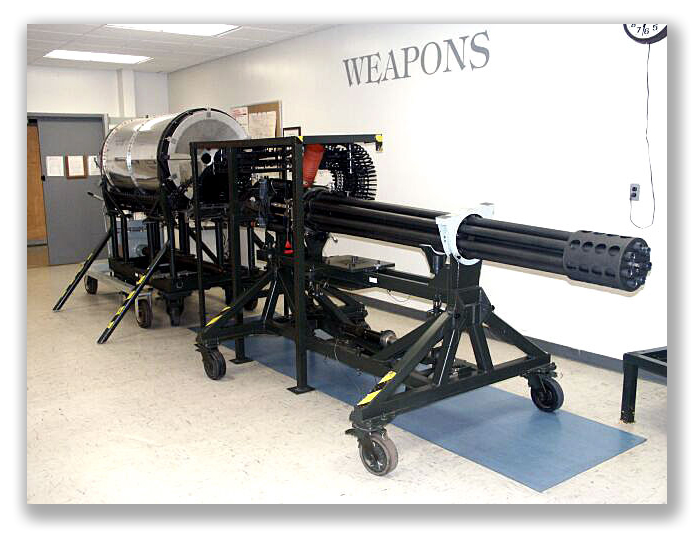We post news and comment on federal criminal justice issues, focused primarily on trial and post-conviction matters, legislative initiatives, and sentencing issues.
CHECK OUT THESE GUNS
About one out of ten federal offenders is charged with a firearms offense, and just about all of them are charged as felons-in-possession.
 The shorthand is misleading, because literally, 18 USC 922 nowhere uses the word “felony.” But it does talk about a lot of other things. You can commit the offense colloquially called felon-in-possession if you own a firearm or ammunition that has traveled in interstate commerce after (1) being convicted of a crime punishable by more than a year in prison; (2) being under indictment for such a crime; (3) being convicted of any misdemeanor involving domestic violence; (4) being a fugitive from justice; (5) being a drug abuser; (6) being under a civil protection order; (7) being an illegal alien; (8) being dishonorably discharged from the armed forces; or (9) having renounced your citizenship.
The shorthand is misleading, because literally, 18 USC 922 nowhere uses the word “felony.” But it does talk about a lot of other things. You can commit the offense colloquially called felon-in-possession if you own a firearm or ammunition that has traveled in interstate commerce after (1) being convicted of a crime punishable by more than a year in prison; (2) being under indictment for such a crime; (3) being convicted of any misdemeanor involving domestic violence; (4) being a fugitive from justice; (5) being a drug abuser; (6) being under a civil protection order; (7) being an illegal alien; (8) being dishonorably discharged from the armed forces; or (9) having renounced your citizenship.
The statute’s a hot mess, and its byzantine requirements would almost be laughable if the penalty – up to 10 years in prison – were not so serious. We just talked to a Navy veteran the other day who wanted to expunge a domestic violence misdemeanor he had gotten while on leave 22 years ago. He was shocked when we told him that he was committing a 10-year federal felony by owning the shotgun he hunted deer with every year.
Today’s case isn’t about the flaws in the statute, however, but rather the flaws in the system. Dasean Taylor was very much a felon-in-possession. In fact, he must have caught the authorities’ attention as a bona fide bad guy, because law enforcement sent an informant to buy guns from Dasean on three separate occasions.

Catching Desean the first time he sold a gun would have been plenty to hang him as a felon-in-possession. But the Sentencing Guidelines include an arsenal of enhancements that can jack up the sentencing range of a felon-in-possession, and the government pretty clearly wanted Dasean’s hide.
Dasean’s case centered around a 4-level enhancement for trafficking in firearms. The enhancement would apply to Desean if he sold two or more guns, and knew or had reason to know possession of the guns by the buyer was illegal or the buyer was going to use the guns illegally.
To be sure they could hammer Dasean, the authorities had their undercover buyer tell Dasean he was going to file the serial numbers off one of the guns. One of other guns sold was a sawed-off shotgun, illegal to own unless it was registered under 26 USC 5841. The district court held that the sale of those two guns satisfied the trafficking enhancement.
An unfortunate effect of the adoption of the federal sentencing guidelines was to institutionalize the practice of sentence manipulation. The drug guidelines increased according to the weight of the drugs sold, so law enforcement would not just make one buy, but rather a number of buys, until a weight threshold was reached. If the offense carried an enhancement for possession of a firearm, the undercover would beg the defendant to find a gun, any gun, that the undercover could buy. The worst examples are the “stash house” robberies, where the ATF agents running the sting would tell tales of a fictitious safe house stacked with kilos and kilos of cocaine. Why tell the perps they could knock over a place and get 4 kilos of coke when it was just as easy to promise 25 kilos?

In today’s case, Desean complained on appeal that there wasn’t enough evidence to apply the 4-level enhancement to his sentence (giving him 71 months instead of 46 months). Monday, the 1st Circuit affirmed the enhancement and sentence.
The district court found that “the cooperating witness [said] that he [was] going to take the serial number off” and that therefore “Mr. Taylor as a supplier would know [that the transfer] involved some unlawful possession or the use or disposal of the firearm unlawfully.” Dasean said the audio didn’t prove he heard the buyer say that, but the Circuit concluded otherwise., holding that because Taylor must have heard the statement,
then the District Court committed no clear or obvious error — or, for that matter, any error at all — in concluding that Taylor knew or should have known that the removal of a serial number is indicative of “anticipation that the gun will be used in criminal activity,” and thus that Taylor knew or should have known that CW-1 intended to use or dispose of the firearm unlawfully.
Now that’s a totem pole of inferences! The Court inferred from the audio that Dasean heard the buyer saw he’d remove the number, it inferred that Dasean knew that removing serial numbers indicates the buyer plans to be up to no good with the gun, and therefore it inferred that Dasean knew or should have known that the buyer intended to use or dispose of the firearm unlawfully.
Maybe so, but we think that begs the question. The cooperating witness did not intend to use the firearm unlawfully, or, for that matter, to remove the serial number. Instead, he was buying the firearm (and making the claim) at the behest of law enforcement, without any intention of carrying out his promise. It’s pretty obvious the buyer claimed he wanted to remove the serial number solely to trap Dasean with a higher guideline range. But can a defendant be said to know a b uyer will do something the buyer has no intention of doing when he claims to plan to do so?
It’s just unseemly to lie to someone, and then punish them because you assert they must have believed their lie.
 Of course, there was a sawed-off shotgun, too. Under the National Firearms Act, one may not possess a sawed-off shotgun without registering it with the ATF. But the district court conceded that proper registration of the shotgun was possible, just unlikely. The Court of Appeals agreed, noting among other things that Dasean knew the buyer was up to no good because he “was on notice that CW-1 had expressed during the September transaction an intention to remove the serial number from a firearm.”
Of course, there was a sawed-off shotgun, too. Under the National Firearms Act, one may not possess a sawed-off shotgun without registering it with the ATF. But the district court conceded that proper registration of the shotgun was possible, just unlikely. The Court of Appeals agreed, noting among other things that Dasean knew the buyer was up to no good because he “was on notice that CW-1 had expressed during the September transaction an intention to remove the serial number from a firearm.”
We don’t excuse selling guns to people who intend to misuse them, but the entire exercise in pumping up Dasean’s sentence struck us a serious case of bootstrapping.
United States v. Taylor, Case No. 15-1775 (1st Circuit, Jan. 9, 2017)
– Thomas L. Root

